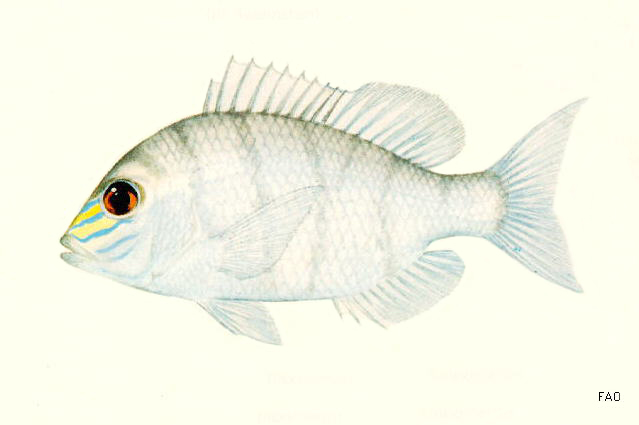| Lethrinidae (Emperors or scavengers), subfamily: Monotaxinae |
| 35 cm TL (male/unsexed) |
|
reef-associated; marine; depth range 20 - 80 m, non-migratory |
| Western Pacific: Indo-Malaysian Archipelago and South China Sea. |
|
Dorsal spines (total): 10-10; Dorsal soft rays (total): 10-10; Anal spines: 3-3; Anal soft rays: 10-10. Description: The lower edge of the eye is well above a line from the tip of the snout to the middle of the caudal fin fork. The eye is relatively large, its diameter slightly greater than the interorbital space. Overall color is silvery-white, grayish on upper back. There are about 5-7 narrow irregular bars, which may be very faint, on the sides. A prominent blue-edged, yellow band from the front of the eye to above the upper lip encompassing the nostrils. The cheek is yellowish with 3 or 4 oblique bands sloping upwards from above the upper jaw towards the rear part of the eye. Fins are mainly clear or whitish. A black spot is at the base of upper pectoral rays; a narrow brown bar across the base of the entire fin (Ref. 2295). Body depth 2.3-2.4 in SL. Caudal fin tips pointed (Ref. 90102). |
| Occurs over sand, mud, and rubble areas. Feed mainly on small bottom-living gastropods. Marketed fresh or dried-salted. Also caught with bottom longlines and handlines (Ref. 9775). |
|
Least Concern (LC); Date assessed: 12 April 2023 Ref. (130435)
|
| harmless |
Source and more info: www.fishbase.org. For personal, classroom, and other internal use only. Not for publication.
